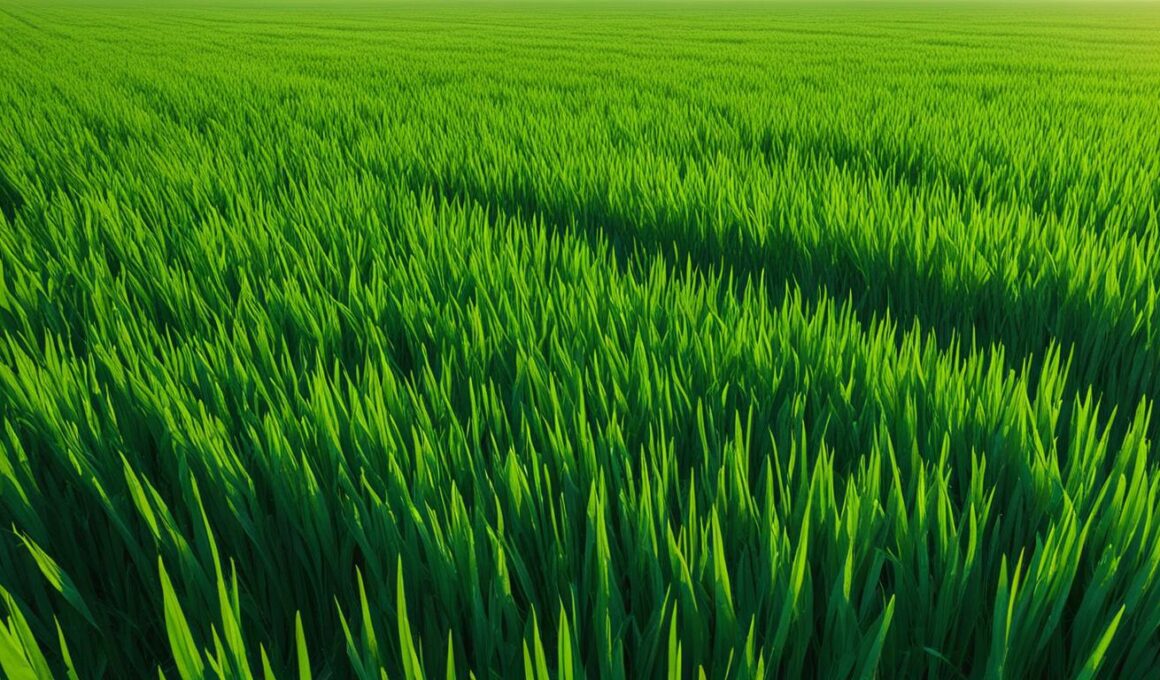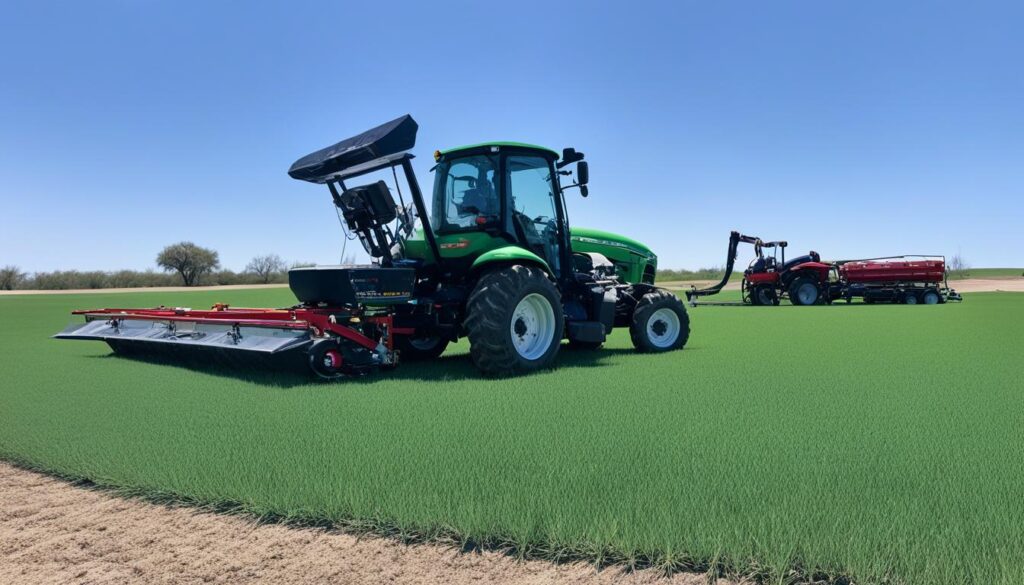Are you looking to maintain a lush and vibrant lawn throughout the year in Texas? Look no further than rye grass. Whether you’re a homeowner or a professional landscaper, rye grass is an excellent choice for enhancing the beauty of your outdoor space.
Rye grass, both annual and perennial, thrives in the Texas climate, particularly during the winter season when other grasses go dormant. Its fast germination and establishment rates make it suitable for both temporary and permanent lawns, providing immediate results that you can enjoy all year round. Not only does rye grass offer a luxurious and vibrant aesthetic, but it also offers numerous benefits for your lawn.
One of the key advantages of rye grass is its ability to protect the underlying lawn structure, preventing erosion and maintaining a healthy foundation. Additionally, rye grass acts as a natural barrier against weed growth, keeping your lawn weed-free and pristine. It even provides essential nutrition to other grass varieties, ensuring their vitality during the cold months.
To top it off, rye grass serves as a protective cover for your lawn during freezing temperatures, shielding it from the harsh elements. By planting rye grass in Texas, you can create a stunning winter and fall landscape that will be the envy of your neighbors.
So, when is the ideal time to plant rye grass in Texas? To achieve optimal results, it’s recommended to plant approximately 30 days before the first frost, typically between October and early November. This timing allows the grass to establish itself before winter sets in.
Whether you’re looking to enhance your existing lawn or starting from scratch, rye grass is an excellent choice for Texas homeowners. With its fast growth and multiple benefits, it’s no wonder that rye grass is a popular option for maintaining a beautiful lawn throughout the year.
Advantages of Seeding Ryegrass in the Fall in Texas
Seeding ryegrass in the fall in Texas offers several advantages. Firstly, it helps maintain a vibrant and green lawn throughout the winter season when other grasses go dormant. Ryegrass acts as a protective cover, preserving the structure of your lawn and preventing patches of dried grass.
Secondly, ryegrass takes deep root in the soil, aerating it and preventing weed growth during the dormant period. This ensures that your lawn remains healthy and free from unwanted plants.
Thirdly, when ryegrass dies and decomposes in winter, it provides organic matter that nourishes other lawn grasses, ensuring they have the nutrition they need to survive the cold season. This helps promote the overall health and resilience of your lawn.
Lastly, ryegrass layers the ground quickly, offering protection to your other grass varieties from freezing temperatures and foot traffic. This helps prevent damage and maintains the aesthetic appeal of your lawn.
With all these advantages, it’s no wonder that seeding ryegrass in the fall is a popular choice among homeowners in Texas. Not only does it provide year-round greenery, but it also enhances the health and beauty of your lawn.
The Ideal Time to Plant Ryegrass and How to Overseed Your Lawn in Texas
If you want to achieve a lush and vibrant lawn in Texas, planting ryegrass and overseeding your lawn is a must. Timing is crucial when it comes to planting ryegrass, as it ensures optimal growth and establishment. In Texas, the ideal time to plant ryegrass is approximately 30 days before the first frost, typically between October and early November.
During this period, the night temperatures are well above 50°F, and the diurnal temperatures do not exceed 70°F. These temperature conditions provide the perfect environment for ryegrass seeds to germinate and establish themselves in your lawn.
Prior to overseeding, it is recommended to aerify your lawn 30 days in advance if possible. Aerifying helps to alleviate soil compaction and allows the ryegrass seeds to penetrate the soil more easily.
If aerification is not feasible, you can scalp the lawn down to the lowest height your mower can achieve. This will ensure good seed-to-soil contact, giving the ryegrass seeds the opportunity to germinate effectively.
Pro tip: Before overseeding, it is important to remove any existing thatch or debris on the lawn, as they can hinder seed germination and establishment.
Once you have overseeded your lawn with ryegrass, it is crucial to fertilize the newly seeded area with a complete fertilizer immediately after seeding. This will provide the necessary nutrients for the ryegrass seeds to grow and thrive.
After about three weeks, when the ryegrass seedlings have emerged, it is recommended to apply another round of fertilizer to promote a dense and healthy stand of grass. This additional fertilization will help the ryegrass establish a strong root system and create a beautiful green lawn.
Watering is also an essential aspect of overseeding your lawn. It is important to water the lawn lightly a few times a day until germination. However, be cautious not to overwater, as excessive moisture can cause the seeds to rot.
Conclusion
Seeding ryegrass in the fall in Texas is a popular practice among homeowners looking to maintain a green and vibrant lawn throughout the winter season. The benefits of overseeding with ryegrass are numerous. By planting ryegrass, you can preserve the structure of your lawn, preventing it from becoming patchy or dried out. Ryegrass also acts as a natural barrier, preventing weed growth and keeping your lawn looking pristine.
Furthermore, ryegrass provides valuable nutrition to other grass varieties in your lawn, ensuring they have the nutrients they need to remain healthy and strong. Additionally, ryegrass protects your lawn from freezing temperatures, acting as a cover that shields the grass from the harsh winter weather.
To achieve successful establishment of ryegrass, it is important to follow proper overseeding techniques. This includes aerification, which helps promote seed-to-soil contact, and fertilization, which provides essential nutrients to encourage healthy growth. If you’re unsure about the process, consider working with a professional lawn maintenance company. They can provide expert advice and assistance in overseeding and maintaining your lawn, ensuring it thrives all winter long.
Is Rye Grass Suitable for Central Florida’s Climate and Soil?
Yes, rye grass is one of the best grass seed central Florida for its climate and soil. It thrives in the cooler months and is tolerant of the sandy, well-drained soil common in the area. Rye grass provides excellent ground coverage and is an ideal choice for lawns and sports fields in Central Florida.










